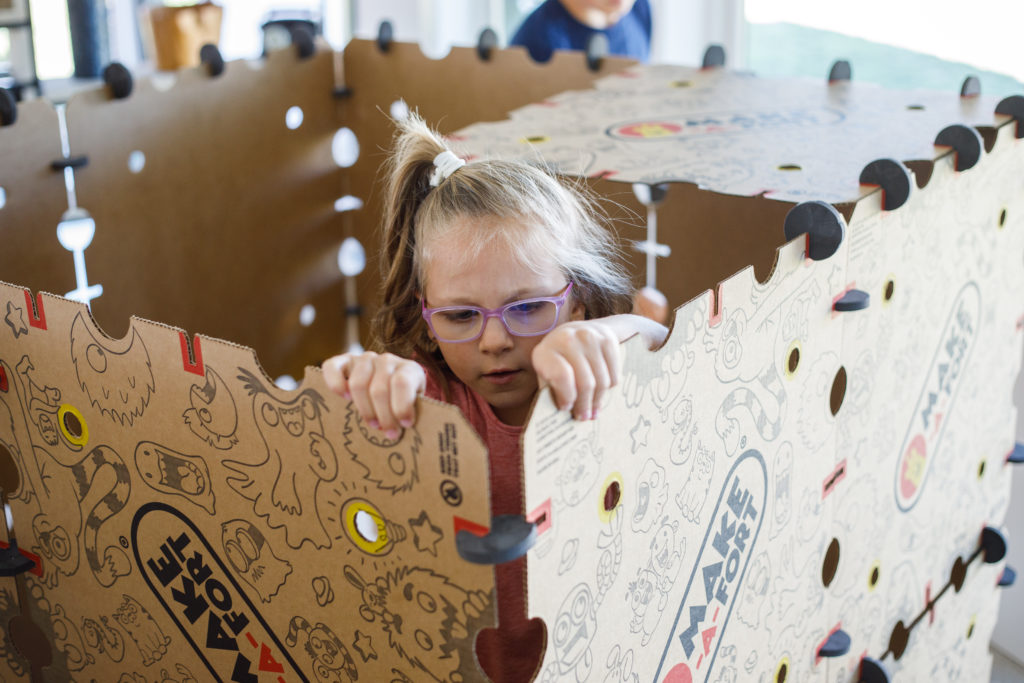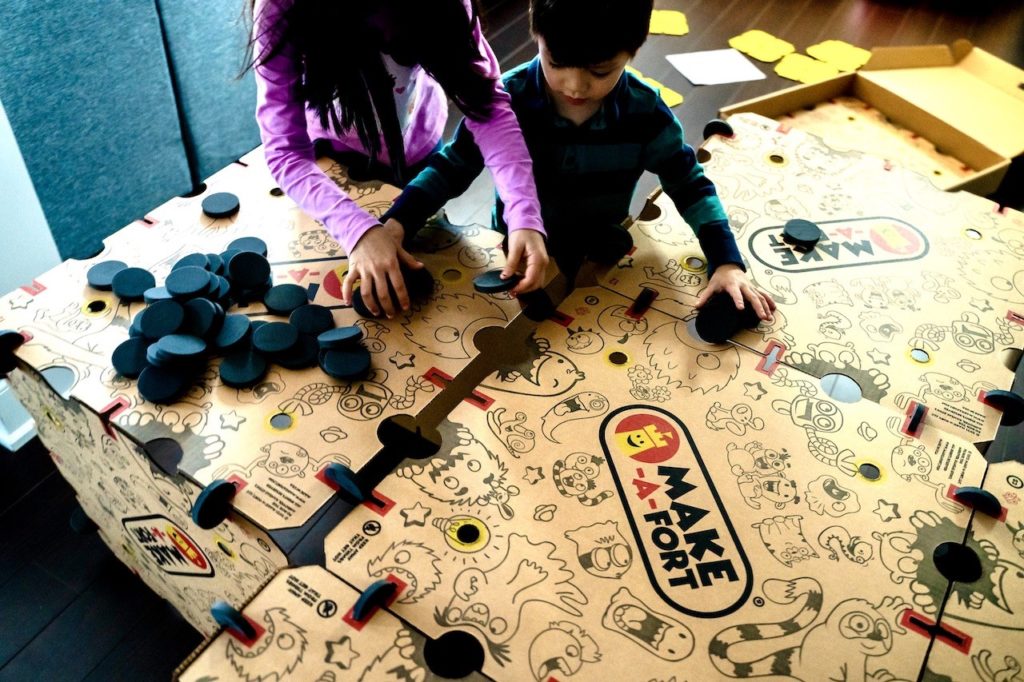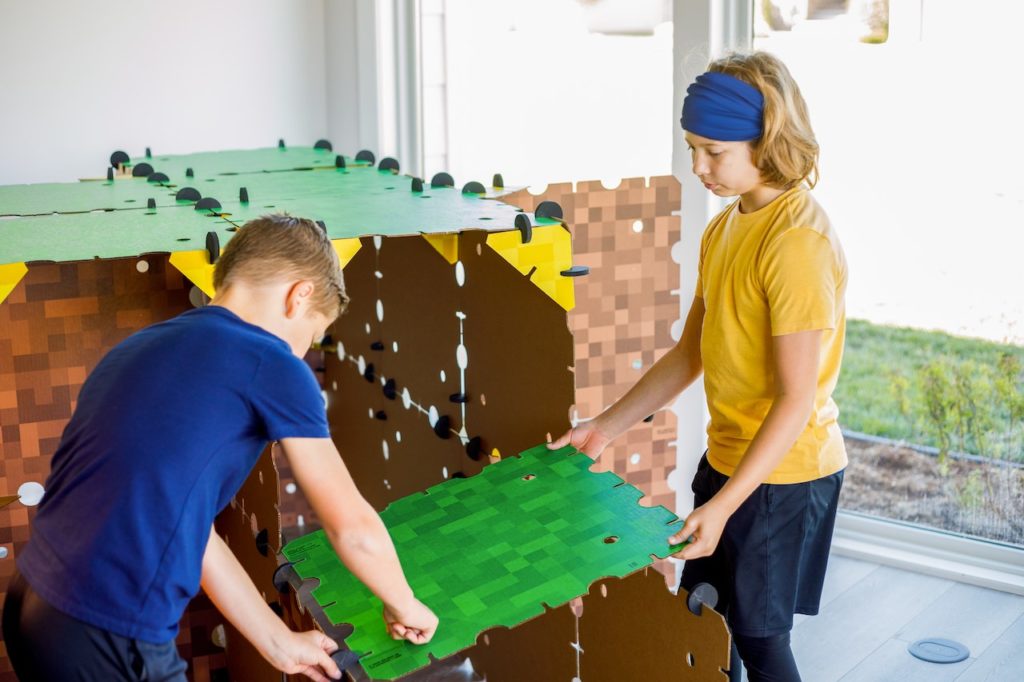
The Kansas company, which sources its products from the American midwest, has exploded in popularity since the pandemic.
With the abundance of technological advances in the past 30 years, many of America’s children can be found occupying their playtime sitting alone in front of a screen.
Not that many years ago, parents debated the merits of their young children spending countless hours sitting in front of the television rather than congregating with their friends, getting exercise and learning all-important social skills. Nowadays, kids can access an endless number of inexpensive options, from hand-held computer games to video tablets and smartphones.
But how to entice youngsters to put the screens down – even on cold winter days?
That’s the goal of Make-A-Fort, an Andover, Kansas company that supplies simple materials for children to build an old-fashioned fort, a toy favorite for many generations.
The company appears to be on to something. Make-A-Fort proved to be one of the most popular items included in our 2022 Made in America Holiday Gift Guide, as it sold out of its inventory just days before Christmas. But now the company is restocked and ready to provide kids of all ages with hours of enjoyment for the cold winter months ahead.
“Forts are a generational toy, and lots of people from all ages remember building forts,” said Jodi Dahl, project manager of Make-A-Fort. “All of our products for our North American market – because we sell in Canada now – are sourced from the American Midwest.”

Make-A-Fort’s three varieties of cardboard building kits are an ideal indoor toy for use inside during the dark, cold months of winter. The thick paper walls are reinforced cardboard, and it is much heavier duty than your average cardboard used for making shipping boxes.
Plus, each kit also comes with a handy carrying case so that once it is time to disassemble the fort, the materials are packed neatly until it is time to rebuild or redesign another type of fort for indoor playtime.
“Our Explorer Kit includes 20 cardboard panels which are 2 feet by 2 feet in size for easy storage,” Dahl said. “We have 86 foam connectors in each kit that are just little round circles that you that you put in the slots on the cardboard to firmly connect each piece. We also have 18 yellow triangle braces that easily install to help stabilize the corners when you make a square panel situation.”
Make-A-Fort is the brainchild of suburban Wichita, Kansas friends Kent Johnson and Troy Lindeman. The idea was born in 2018, and the company began selling kits in August 2020, not long after many restless children were stuck at home because of Covid restrictions.
“The idea really came from Kent and his wife Shannon,” Dahl said. “They have a grandson, and Kent created a fort in the house for their grandson, but said to Shannon, ‘Are you going to take this down?’ Their grandson was not happy with the idea that it was going to be taken away… Kent and Shannon came up with the idea of a fort you can build and at night you can put it away and then you can build it again, so that is how the idea really came into play.
“Kent and Troy are just two fathers who became friends and came up with this idea and continue to grow it into what it is today.”

In the two-and-a-half years since Make-A-Fort hit the market, the cardboard forts have increased sales each year and are available through the company’s website, along with major retailers like Target, Walmart, and Amazon.
“We market from ages 4 to 12, with our newest product which is Minecraft,” Dahl said. “That always depends on the child, of course. And the younger they are, they may need older children or parents to help with the build, but it all depends on the skill level of the child.
“It is definitely a STEM (science, technology, engineering and mathematics) toy because you have your building, working with others, design — or if you follow our instructions, it is learning. You really don’t need instructions because you can build what you want using your own imagination, but we do have some particular instructions if people want to follow them.
“Kids are mini-engineers. It’s your imagination, and you are building, you are working together. We give examples of many, many things you can build, but on our website you can see many pictures of people who have come up with their own creations. It is always exciting for us to see what other young kids come up with.”
Make-A-Fort is an inclusive family activity with kids often joining in with their parents and grandparents, who remember building forts in their own childhood. It stimulates the mind in a way an electronic device does not, and is indeed an important social activity in the development of a young child.
“I love the fact that kids have to work together when they are building,” Dahl said. “If they are building with more than one child, they have to actually learn how to coordinate with other people. These are valuable lessons for children.”
